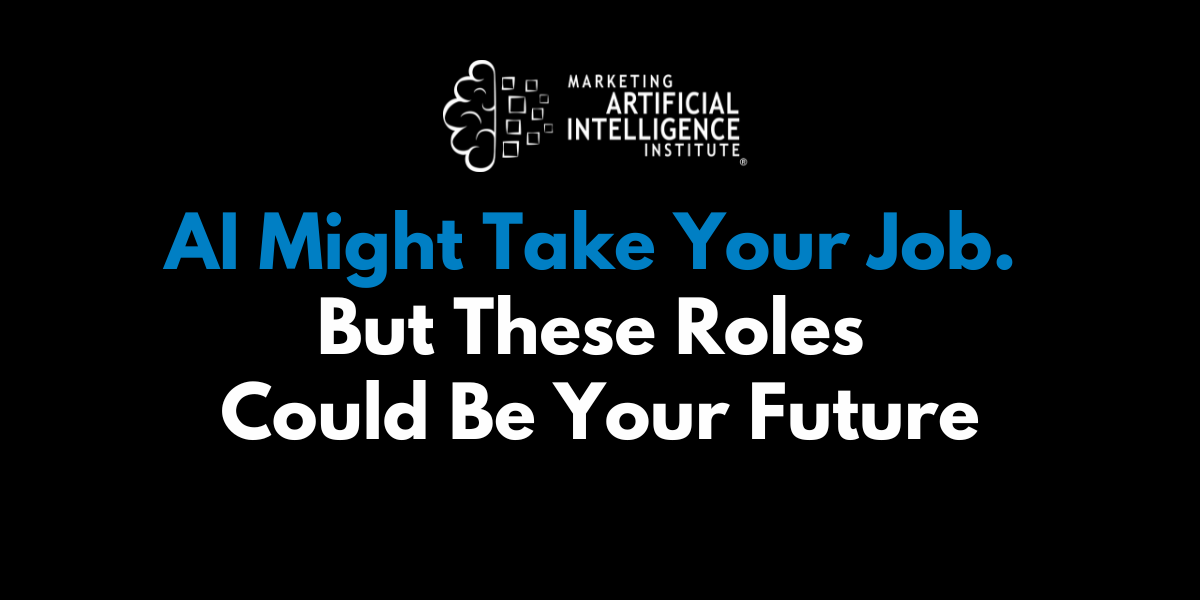XAI: Your Indispensable Compass for AI Regulatory Compliance
The rapid proliferation of Artificial Intelligence (AI) systems across various sectors has brought with it an urgent need for robust regulatory frameworks. As AI models become increasingly sophisticated and integrated into critical decision-making processes, concerns around transparency, fairness, and accountability have risen to the forefront. In this complex and evolving legal landscape, Explainable AI (XAI) is emerging not merely as a technical advancement but as an indispensable compass for organizations striving to achieve and maintain compliance with global AI regulations. The Evolving AI Regulatory Landscape The "black box" nature of many advanced AI systems, where their internal workings and decision-making processes are opaque, presents a significant challenge to trust and oversight. This opacity has catalyzed a global movement towards stricter AI governance. Major legislative efforts, such as the European Union's AI Act and the General Data Protection Regulation (GDPR), specifically Article 22 concerning automated individual decision-making, underscore a universal demand for AI systems that are not only effective but also understandable and auditable. These regulations are designed to protect fundamental rights and ensure that AI deployment is ethical and responsible. They demand transparency to prevent discrimination, ensure fairness, enable thorough audits, and safeguard consumer rights. For instance, the EU AI Act adopts a risk-based framework, imposing stringent transparency and oversight requirements on AI systems classified as moderate to high risk. This regulatory push highlights a pivotal question: how can organizations meet these demands when the inner workings of AI can be fundamentally hidden? How XAI Addresses Regulatory Requirements Explainable AI directly tackles the challenges posed by AI opacity, providing methodologies and tools to shed light on how AI models arrive at their conclusions. XAI helps bridge the gap between complex algorithms and the need for human understanding, thereby enabling organizations to meet critical regulatory demands. Transparency & Interpretability: At its core, XAI provides insights into model decisions. Techniques like LIME (Local Interpretable Model-agnostic Explanations) and SHAP (SHapley Additive exPlanations) offer ways to understand the contribution of individual features to a model's prediction. This interpretability directly addresses regulatory requirements for transparency, allowing stakeholders to comprehend why an AI system made a particular decision, rather than simply accepting its output. This is crucial for building trust and ensuring that AI systems are not making arbitrary or unexplainable choices. Accountability: When an AI system makes an erroneous or biased decision, pinpointing the cause can be incredibly difficult without XAI. By providing clear explanations, XAI helps identify the specific inputs or model parameters that led to a particular outcome, enabling better accountability. This allows organizations to take corrective action, refine their models, and demonstrate due diligence to regulatory bodies. Bias Detection & Mitigation: Regulations globally emphasize the need for fair AI systems that do not perpetuate or amplify existing societal biases. XAI techniques can be instrumental in identifying and explaining biases embedded within training data or emerging from model behavior. By visualizing feature importance or analyzing counterfactual explanations, developers can detect discriminatory patterns and work towards mitigating them, a crucial step for achieving regulatory compliance related to fairness and non-discrimination. For deeper insights into identifying and addressing model biases, explore resources on explainable AI XAI insights. Auditability: Regulatory audits often require organizations to demonstrate that their AI systems are operating as intended and in compliance with established rules. XAI outputs, such as feature importance scores, decision rules extracted from models, or local explanations for specific predictions, can serve as concrete evidence during these audits. This documentation proves invaluable in demonstrating an AI system's adherence to regulatory standards and ethical guidelines. Right to Explanation: Many emerging regulations, influenced by GDPR's Article 22, grant individuals the "right to explanation" for decisions made by automated systems that significantly affect them. XAI directly supports this right by providing human-understandable explanations for individual predictions. This empowers individuals to understand, challenge, and seek redress for adverse decisions made by AI, fostering trust and upholding individual rights. Practical Implementation & Challenges While the benefits of XAI for compliance are clear, its practical integration presents several challenges. One of the primary dilemmas is the inherent trade-off between model accuracy and in

The rapid proliferation of Artificial Intelligence (AI) systems across various sectors has brought with it an urgent need for robust regulatory frameworks. As AI models become increasingly sophisticated and integrated into critical decision-making processes, concerns around transparency, fairness, and accountability have risen to the forefront. In this complex and evolving legal landscape, Explainable AI (XAI) is emerging not merely as a technical advancement but as an indispensable compass for organizations striving to achieve and maintain compliance with global AI regulations.
The Evolving AI Regulatory Landscape
The "black box" nature of many advanced AI systems, where their internal workings and decision-making processes are opaque, presents a significant challenge to trust and oversight. This opacity has catalyzed a global movement towards stricter AI governance. Major legislative efforts, such as the European Union's AI Act and the General Data Protection Regulation (GDPR), specifically Article 22 concerning automated individual decision-making, underscore a universal demand for AI systems that are not only effective but also understandable and auditable.
These regulations are designed to protect fundamental rights and ensure that AI deployment is ethical and responsible. They demand transparency to prevent discrimination, ensure fairness, enable thorough audits, and safeguard consumer rights. For instance, the EU AI Act adopts a risk-based framework, imposing stringent transparency and oversight requirements on AI systems classified as moderate to high risk. This regulatory push highlights a pivotal question: how can organizations meet these demands when the inner workings of AI can be fundamentally hidden?
How XAI Addresses Regulatory Requirements
Explainable AI directly tackles the challenges posed by AI opacity, providing methodologies and tools to shed light on how AI models arrive at their conclusions. XAI helps bridge the gap between complex algorithms and the need for human understanding, thereby enabling organizations to meet critical regulatory demands.
Transparency & Interpretability: At its core, XAI provides insights into model decisions. Techniques like LIME (Local Interpretable Model-agnostic Explanations) and SHAP (SHapley Additive exPlanations) offer ways to understand the contribution of individual features to a model's prediction. This interpretability directly addresses regulatory requirements for transparency, allowing stakeholders to comprehend why an AI system made a particular decision, rather than simply accepting its output. This is crucial for building trust and ensuring that AI systems are not making arbitrary or unexplainable choices.
Accountability: When an AI system makes an erroneous or biased decision, pinpointing the cause can be incredibly difficult without XAI. By providing clear explanations, XAI helps identify the specific inputs or model parameters that led to a particular outcome, enabling better accountability. This allows organizations to take corrective action, refine their models, and demonstrate due diligence to regulatory bodies.
Bias Detection & Mitigation: Regulations globally emphasize the need for fair AI systems that do not perpetuate or amplify existing societal biases. XAI techniques can be instrumental in identifying and explaining biases embedded within training data or emerging from model behavior. By visualizing feature importance or analyzing counterfactual explanations, developers can detect discriminatory patterns and work towards mitigating them, a crucial step for achieving regulatory compliance related to fairness and non-discrimination. For deeper insights into identifying and addressing model biases, explore resources on explainable AI XAI insights.
Auditability: Regulatory audits often require organizations to demonstrate that their AI systems are operating as intended and in compliance with established rules. XAI outputs, such as feature importance scores, decision rules extracted from models, or local explanations for specific predictions, can serve as concrete evidence during these audits. This documentation proves invaluable in demonstrating an AI system's adherence to regulatory standards and ethical guidelines.
Right to Explanation: Many emerging regulations, influenced by GDPR's Article 22, grant individuals the "right to explanation" for decisions made by automated systems that significantly affect them. XAI directly supports this right by providing human-understandable explanations for individual predictions. This empowers individuals to understand, challenge, and seek redress for adverse decisions made by AI, fostering trust and upholding individual rights.
Practical Implementation & Challenges
While the benefits of XAI for compliance are clear, its practical integration presents several challenges. One of the primary dilemmas is the inherent trade-off between model accuracy and interpretability. Simpler, inherently explainable models like decision trees might be easy to understand but often lack the predictive power of complex deep neural networks. Conversely, highly accurate "black box" models are difficult to explain. Developers must navigate this balance, often opting for post-hoc XAI techniques to explain complex models without sacrificing performance.
Other challenges include the scalability of XAI techniques for very large and complex models, the lack of standardized XAI metrics for regulatory purposes, and the subjective nature of what constitutes a "good" or "sufficient" explanation, which can vary greatly among different stakeholders and regulatory contexts.
Despite these hurdles, organizations can adopt practical steps to integrate XAI for regulatory compliance:
- Prioritize Explainability from Design: Integrate XAI considerations early in the AI system development lifecycle, rather than as an afterthought.
- Utilize a Portfolio of XAI Techniques: Different XAI methods offer different types of explanations. Employing a combination (e.g., global interpretability for model understanding and local interpretability for individual predictions) can provide a comprehensive view.
- Establish Clear Documentation Standards: Document XAI outputs, the methodologies used, and how explanations are generated and validated. This documentation is crucial for audit trails.
- Foster Interdisciplinary Collaboration: Encourage collaboration between AI developers, legal experts, ethicists, and domain specialists to ensure that explanations are technically sound, legally compliant, and understandable to all relevant parties.
Here's a simplified Python code example demonstrating how LIME can be applied to a basic classification model to generate an explanation for a single prediction, which can then be used for compliance purposes:
import lime
import lime.lime_tabular
import numpy as np
from sklearn.ensemble import RandomForestClassifier
from sklearn.model_selection import train_test_split
# Sample Data (replace with your actual data)
X = np.random.rand(100, 5) # 100 samples, 5 features
y = np.random.randint(0, 2, 100) # Binary classification
feature_names = ['Feature_A', 'Feature_B', 'Feature_C', 'Feature_D', 'Feature_E']
# Train a simple model
X_train, X_test, y_train, y_test = train_test_split(X, y, test_size=0.2, random_state=42)
model = RandomForestClassifier(random_state=42)
model.fit(X_train, y_train)
# Initialize LIME explainer
explainer = lime.lime_tabular.LimeTabularExplainer(
training_data=X_train,
feature_names=feature_names,
class_names=['Class_0', 'Class_1'],
mode='classification'
)
# Explain a single prediction (e.g., for regulatory review)
# Let's say we want to explain the first test sample
i = 0
exp = explainer.explain_instance(
data_row=X_test[i],
predict_fn=model.predict_proba,
num_features=len(feature_names)
)
print(f"Explanation for sample {i} (Predicted Class: {model.predict(X_test[i])[0]}):")
print("---")
# Print the explanation for human understanding and regulatory documentation
for feature, weight in exp.as_list():
print(f"{feature}: {weight:.4f}")
# This output (e.g., "Feature_A: 0.1234") indicates the contribution of each feature
# to the specific prediction, which can be used to explain the model's decision
# to auditors or affected individuals.
This code snippet illustrates how LIME can generate a local explanation for a single prediction, detailing how each feature contributed to the outcome. Such output can be invaluable for regulatory documentation and for explaining decisions to affected individuals, aligning with the "right to explanation."
Future Outlook
The fields of XAI and AI regulation are in constant evolution. We can anticipate further advancements in XAI techniques that offer more nuanced and context-aware explanations, potentially moving beyond post-hoc methods towards inherently more transparent complex models. Simultaneously, regulatory frameworks will likely become more granular and specialized, addressing specific AI applications and their associated risks.
The journey towards fully compliant and trustworthy AI systems necessitates deep interdisciplinary collaboration. AI developers, legal experts, ethicists, and policymakers must work hand-in-hand to define clear standards, develop robust tools, and establish best practices. Only through such collaborative efforts can organizations effectively navigate the intricate AI regulatory maze, with XAI serving as their indispensable compliance compass, ensuring AI is developed and deployed responsibly and ethically. The XAI World Conference 2025 emphasizes this need, focusing on "Legal Frameworks for XAI Technologies" and fostering interdisciplinary collaboration to bridge technical and legal perspectives.














































































































































































![[The AI Show Episode 155]: The New Jobs AI Will Create, Amazon CEO: AI Will Cut Jobs, Your Brain on ChatGPT, Possible OpenAI-Microsoft Breakup & Veo 3 IP Issues](https://www.marketingaiinstitute.com/hubfs/ep%20155%20cover.png)

























































































































































































![GrandChase tier list of the best characters available [June 2025]](https://media.pocketgamer.com/artwork/na-33057-1637756796/grandchase-ios-android-3rd-anniversary.jpg?#)










































.jpg?#)

























_ArtemisDiana_Alamy.jpg?width=1280&auto=webp&quality=80&disable=upscale#)
















































































































![Apple Considers LX Semicon and LG Innotek Components for iPad OLED Displays [Report]](https://www.iclarified.com/images/news/97699/97699/97699-640.jpg)


![Apple Releases New Beta Firmware for AirPods Pro 2 and AirPods 4 [8A293c]](https://www.iclarified.com/images/news/97704/97704/97704-640.jpg)




































































